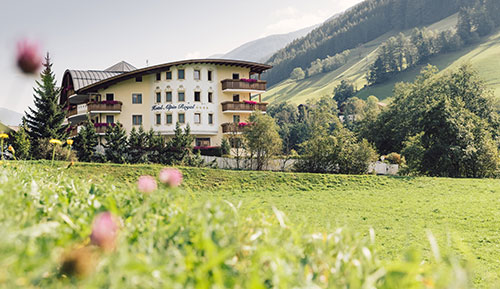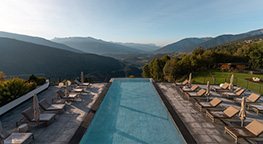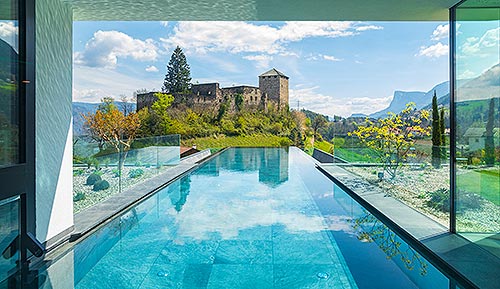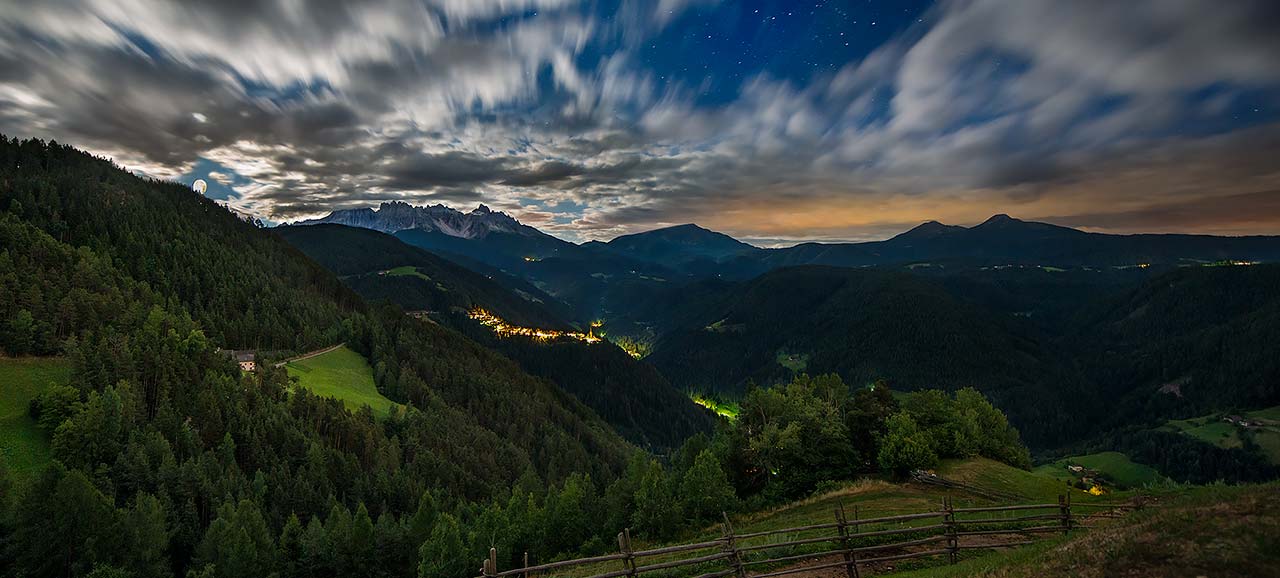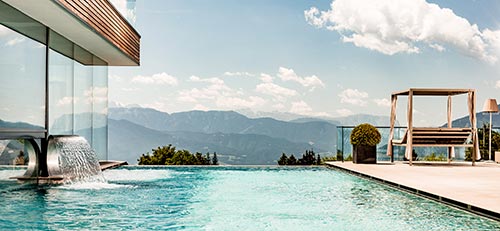Cornedo all'Isarco, its hamlets and the Collepietra astronomical observatory
On a sunny slope, surrounded by the three rivers, the Isarco, the Ega and the Rio Bria, lies the community of Cornedo all'Isarco with the hamlets of Cardano, Prato all'Isarco, San Valentino in Campo, and Collepietra The village named after the castle with the same name, the Castel Cornedo lies at altitudes of between 283 to 1,680 m a.s.l. and extends as far as the mouth of Ega in the Isarco Valley. A really wonderful place: sun, the mountains and nature - all on the very doorstep. In the two larger hamlets of Collepietra and San Valentino in Campo there are the Museum of Local History and the famous Max Valier astronomical observatory.

In winter you can go on the most wonderful hikes wearing snowshoes or take advantage of the proximity of the skiing areas of Latemar-Sopra Ega and Carezza. And in summer there is a programme of hiking and mountain bike tours in this magical natural landscape.
Cornedo all'Isarco village
Only a few minutes from Bolzano on a 510 m high, sunny rise lies the village of Cornedo all'Isarco. The little village is named after the castle of the same name, which rises over the village on an imposing rocky promontory.
Castel Cornedo, constructed in the 13th century, has belonged to the family of Christoph von Malaisé since 1973 and can be visited by appointment from April to October.
Cardano
Cardano, a tiny hamlet of Cornedo, lies at the edge of Bolzano at the entrance to Val d'Ega. It is the administrative centre of Cornedo all'Isarco community with its Town Hall.
The Valle d'Isarco cycle track, which is very popular even with families with small children, passes not far from the village In this section the cycle track offers something very special, from Bolzano to Prato all'Isarco it is designed as an art and cycle track with the sculpture garden created by the sheltered KIMM workshop with 12 sculptures, 80 flags; 7 columns, countless drawings and wall paintings.
Prato all'Isarco
The small village of Prato all'Isarco at an altitude of 315 m a.s.l. was originally called "Plamau", (from Plumme, which meant something like "raft"). This was the place from which rafts used to set out to transport timber right down to the Po valley.
Prato all'Isarco is an important traffic connection. From the Strada Statale 12 dell’Abetone e del Brennero, which passes through the village and proceeds on into Valle Isarco, the roads to Alpe di Siusi, to Collepietra and to the Catinaccio-Latemar region branch off.
During the construction of the Brennero motorway it was decided to demolish the 12th century Church of St. Sebastian. To replace it, the old "Zum kalten Keller" inn was converted as a church.
Another feature of the place is the fact that it extends over three different municipal districts: the largest part lies in the district of Cornedo dell'Isarco, a small part belongs to Renon and yet another part belongs to Fiè allo Sciliar. The cycle tour from the village along the Valle Isarco cycling track is well worth undertaking, as it is suitable even for families with small children.
San Valentino in Campo
At 1,117 m a.s.l. between meadows and woods on the slope of Val d'Ega lies the little village of San Valentino in Campo. The first documented mention of the village goes back to the year 1141; however the finding of a Roman votive picture dedicated to the God Saturn points to much earlier origins.
The parish church is dedicated to St. Valentine and is believed to have been constructed in the 14th century. In 1952 the church was restored and as part of the restoration wonderful glazed windows were installed which are the work of the artist Josef Widmoser. The 42 m high church tower was clad with a new shingle roof in 1955.
The little village is principally famous for its astronomical observatory, opened in June 2002 and dedicated to Max Valier, the renowned astronomer, born in Bolzano in 1885.
Collepietra
For hikers and rock-climbers the little village of Collepietra at an altitude of 820 m is the ideal departure point for a huge variety of tours. However, you can just as easily simply relax here and enjoy the healthy, fresh mountain air.
The popular "Saga Hike" leads you across green meadows and through dense woods to the famous "Earth Pyramids" of Collepietra. These pyramids, columns of earth, each of which supports a block of rock, are a particular erosion formation, which can occur in areas sheltered from the wind.
Those interested in history can take a trip to the past and discover the history of Tyrol in the Collepietra Museum. The Museum of Local History offers a comprehensive and fascinating glimpse into the history of the region. The themes of the collection are daily routine on the farm, traditional costumes, almost forgotten crafts and folk art.
The astronomical observatory
The Max Valier Observatory is located in Collepietra at an altitude of 1,350 m. It was opened in June 2002 and since then all year round, it has been attracting visitors, who can let their gaze wander across the universe. The observatory is directed by the Max Valier Amateur Astronomers’ Association, who also chose the location. The observatory also has a sun observatory with its own dome.
The main telescope in the 6 m high dome of the observatory is a reflector. There are other smaller telescopes on a viewing platform. In an area equipped for the purpose there is a constant programme of interesting lectures.
Between the two domes of the observatory there is a spherical marble sundial weighing some 2,000 kg in total.
There are tours on Thursday evenings all year round. It is necessary to register for these.

